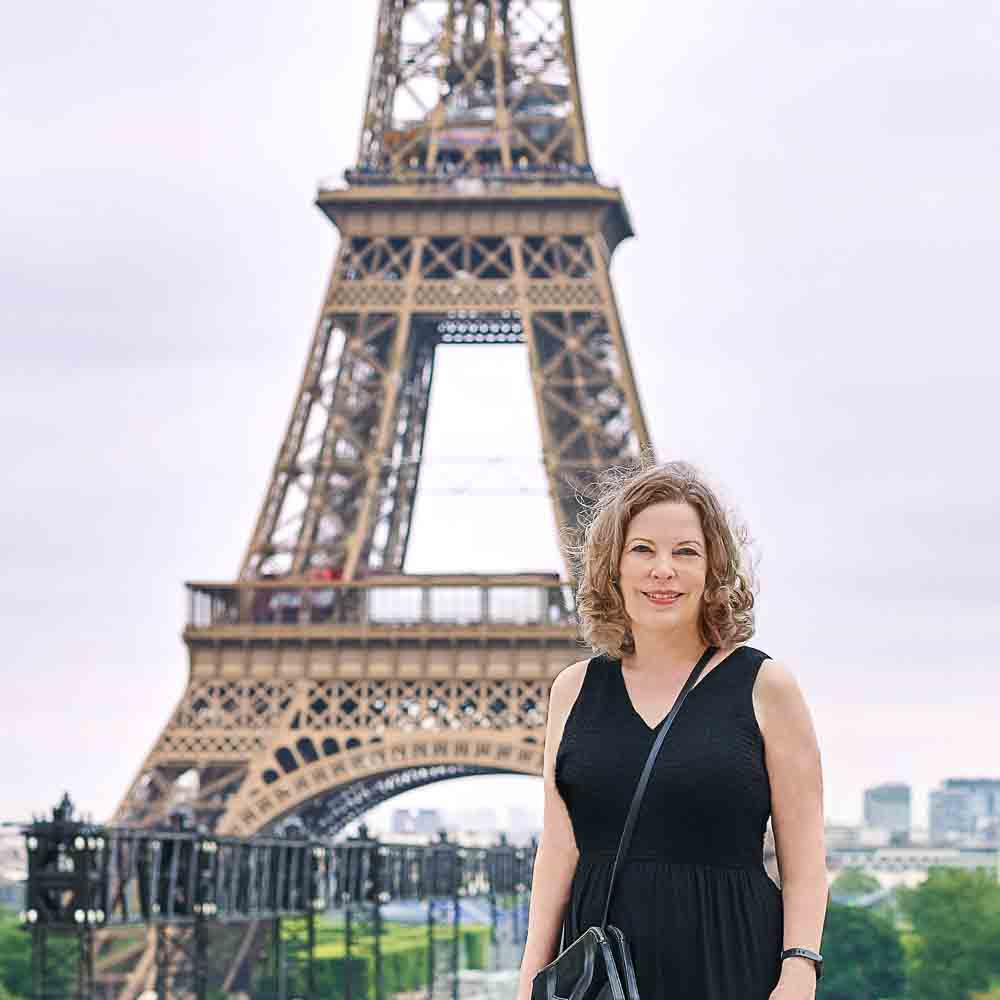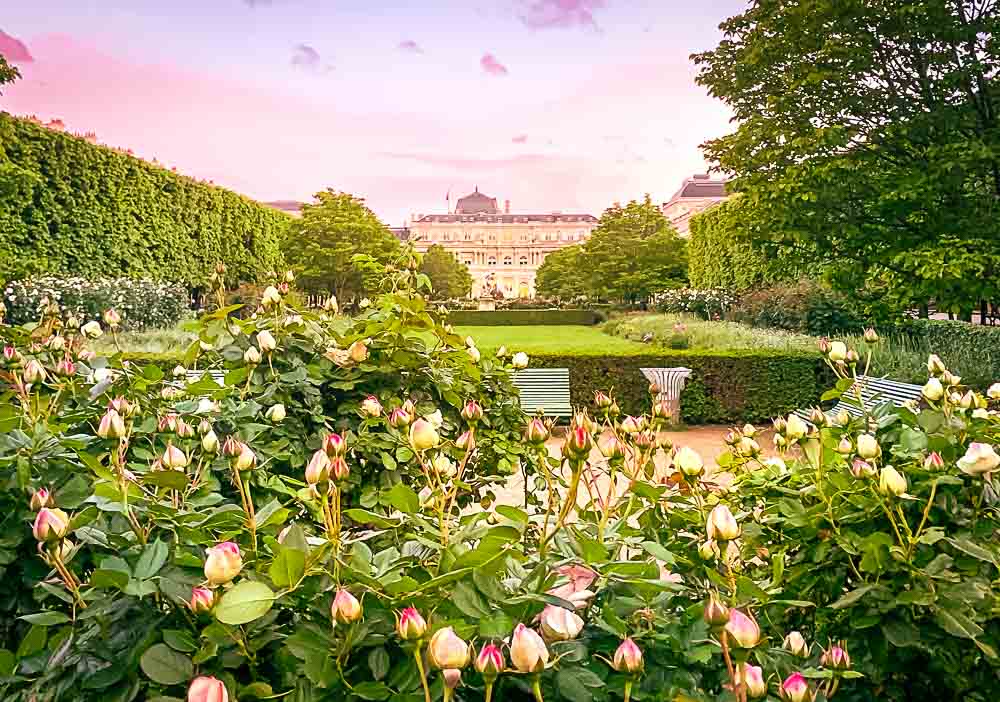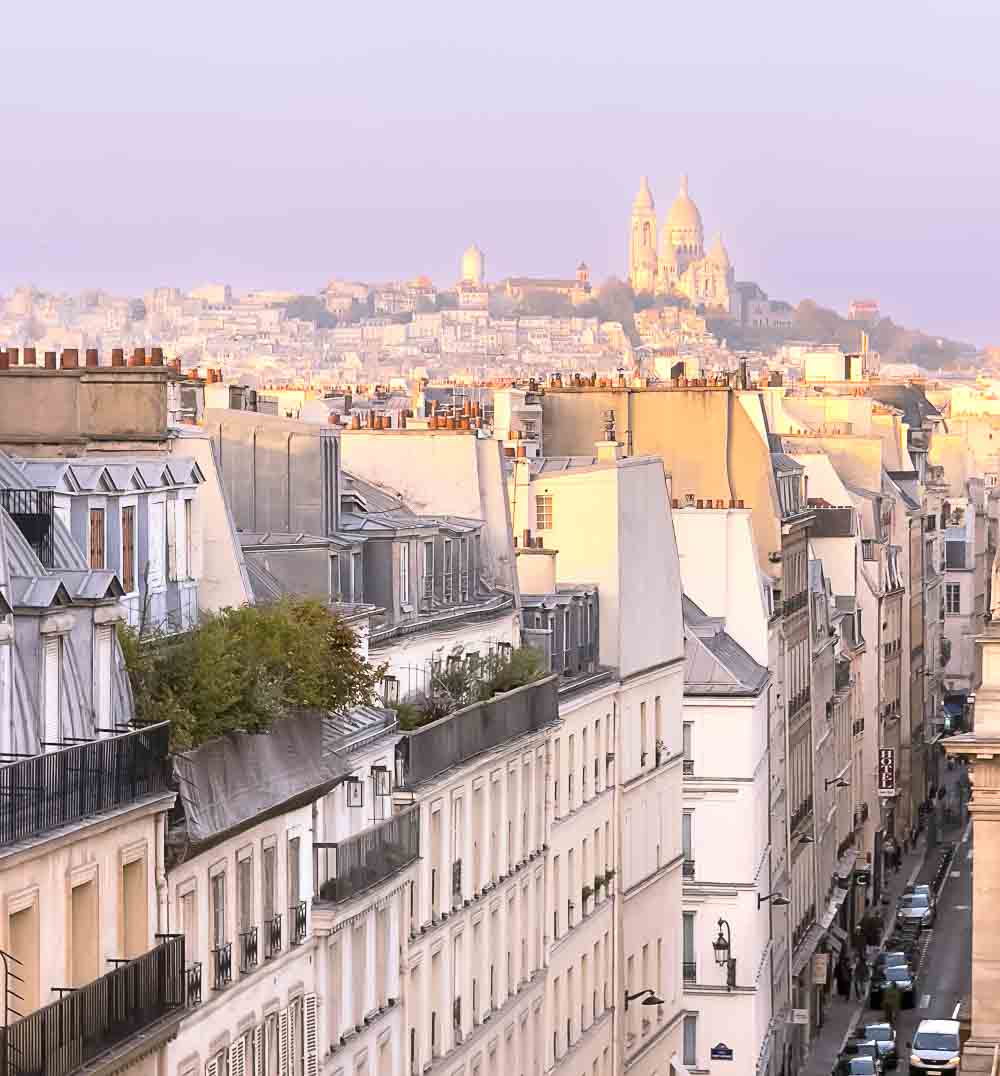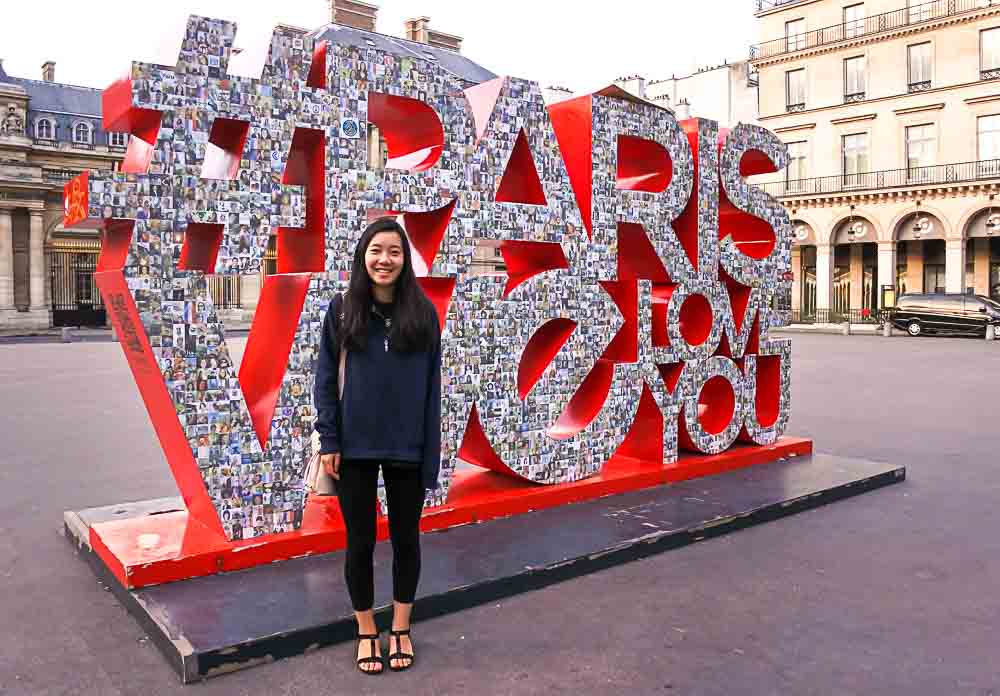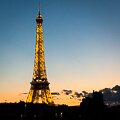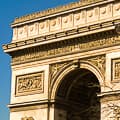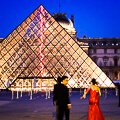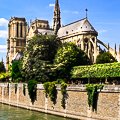The Arc de Triomphe is one of Paris's most famous landmarks - right up there with the Eiffel Tower, Sacré Coeur, and Notre Dame - and instantly recognizable thanks to its distinctive shape and commanding presence at the top of the Champs-Élysées.
But despite its fame as a historical monument built to celebrate Napoleon Bonaparte's military victories (and, let's be honest, his ego), can you guess what really makes the Arc one of today's top visitor attractions?
It's the Arc de Triomphe's rooftop terrace, high above the city streets, where you can experience some of the best skyline views in Paris including its most iconic silhouette: the Eiffel Tower.
Be sure to get your skip-the-line rooftop tickets in advance, because lines at the monument are often long and slow. Check availability for your chosen date:
In this article, I share the reason why Napoleon wanted the Arc de Triomphe to be built, the five most memorable ways for you to explore and enjoy the magnificent Arc, seven fun facts about it, and my recommendations about best places to stay and eat nearby.
Top photo: Arc de Triomphe, (c) Paris Discovery Guide®
Paris Discovery Guide is a reader-supported publication. When you buy through my links, I may earn a small commission at no additional cost to you. Merci beaucoup for your support!
Why Was the Arc de Triomphe Important to Napoleon?
How matter how many photos you've seen of the Arc de Triomphe, nothing quite prepares you for the massive size and awe-inspiring grandeur of this monument when you stand next to it for the first time and gaze up all the way to the top.
That's exactly the impact Napoleon intended when he ordered the Arc's construction in 1806.
By then, he'd been Emperor Napoleon for two years. With many military victories to his credit, he wanted a highly-visible memorial - specifically, a triumphal arch similar to those built by Roman emperors - to honor everyone in his Grande Armée, and of course to celebrate his own triumphant rise to power across Europe.
But delays happened.
The Arc did not get completed until 30 years later. By then, Napoleon was long dead.
Although his remains eventually did get to pass through it on their way to Les Invalides, he never got the thrill of parading through the grand arch while he was alive.
Today, two centuries after Napoleon's death, your Arc de Triomphe experience will be quite different from anything he might have imagined - partly because of the rooftop terrace.
Once you're up on the monument's roof, you'll see the entire City of Light spread out all around you. It's easy to imagine that Napoleon would have enjoyed that experience too.
The 5 Most Popular Things to Do at the Arc de Triomphe
What's the best way to experience the Arc de Triomphe?
Here are my top 5 recommendations:
1. View All of Paris from the Arc's Rooftop Terrace
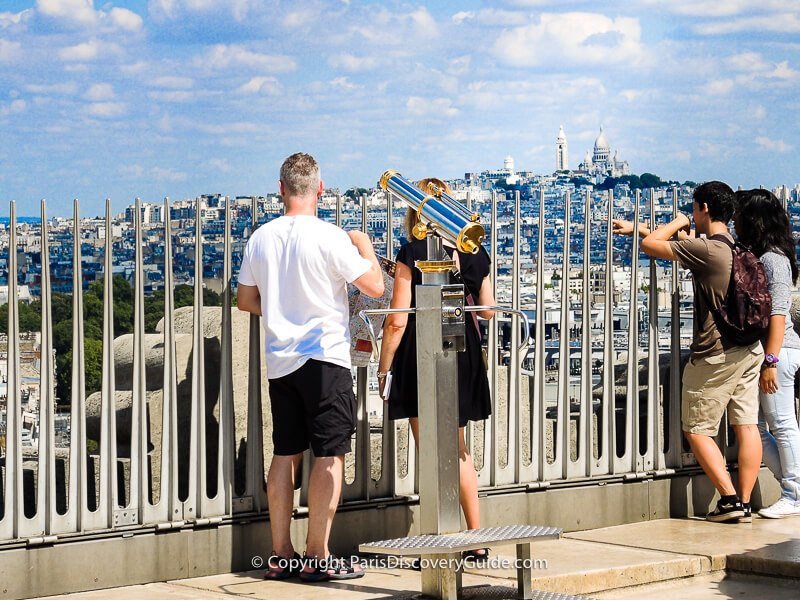
Climb to the top of the Arc's rooftop terrace to catch superb views during the day and night.
Thanks to the Arc's height of 164 feet (50m), the terrace puts you at the perfect distance above ground level to enjoy sweeping views of the Paris skyline and the city's iconic monuments.
The Arc's width of 148 feet (45m) provides plenty of space for visitors without feeling crowded.
Get skip-the-line Rooftop tickets
Time your visit right, and you can watch a stunning sunset leave streaks of gold, apricot, and lavender across the sky.
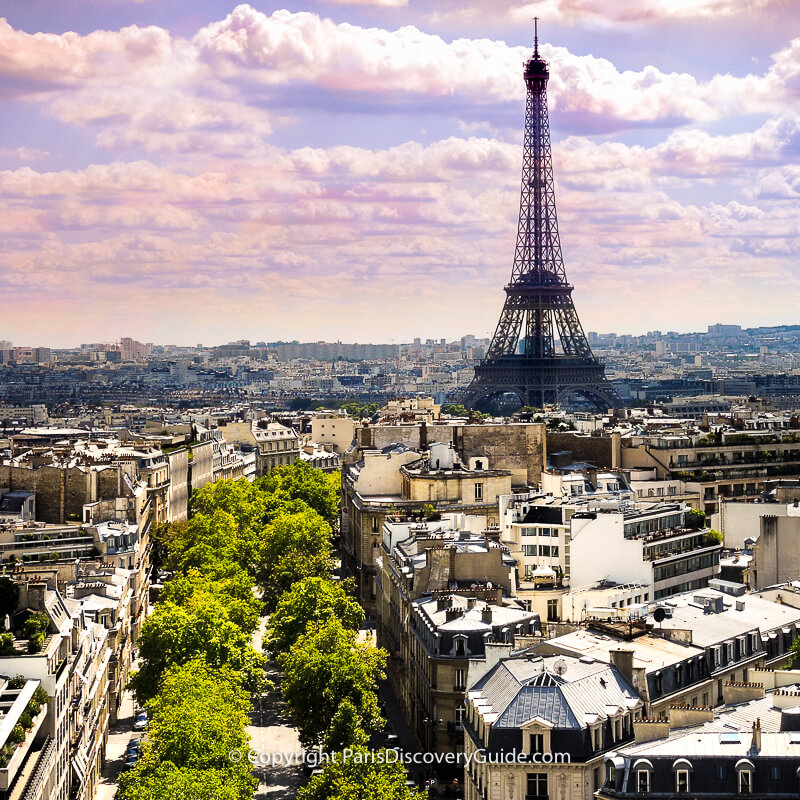
Go at night, and you will see the Eiffel Tower sparkle above the city when its light show kicks off every hour on the hour until 1am.
But don't forget, you'll discover some of the most fascinating views by looking down, especially during the day when you can see chimney pots, rooftop gardens, and fascinating inner courtyards you'd never see if you were strolling down the street.
Take a moment to check out the 12 avenues converging at the small plaza surrounding the Arch. From up high, they look like the spokes of a wheel with the terrace where you're standing as its hub.
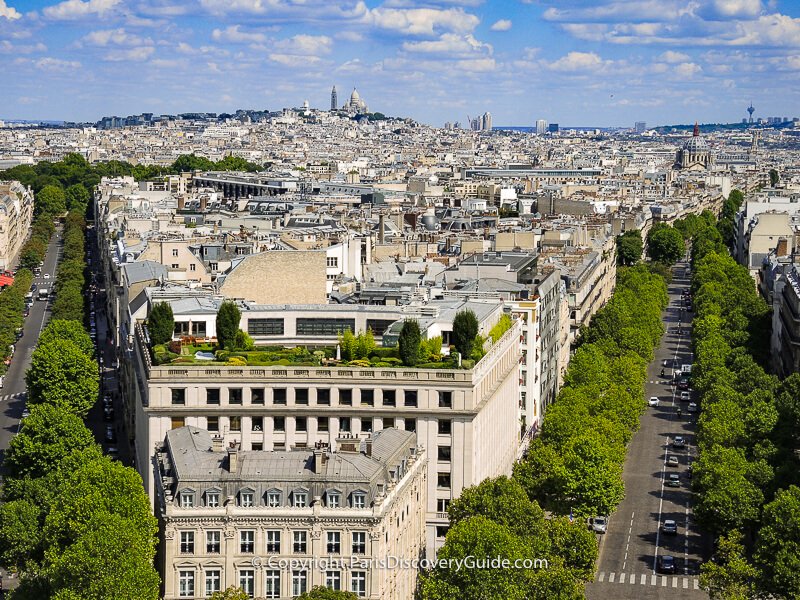
You'll see the city laid out before you in a 360 degree panorama, with famous sites such as the Eiffel Tower easy to spot. Use the brass and stainless steel telescopes placed around the terrace to see them up close.
The circular blue location guide helps you figure out what you're looking at or photographing in the distance.
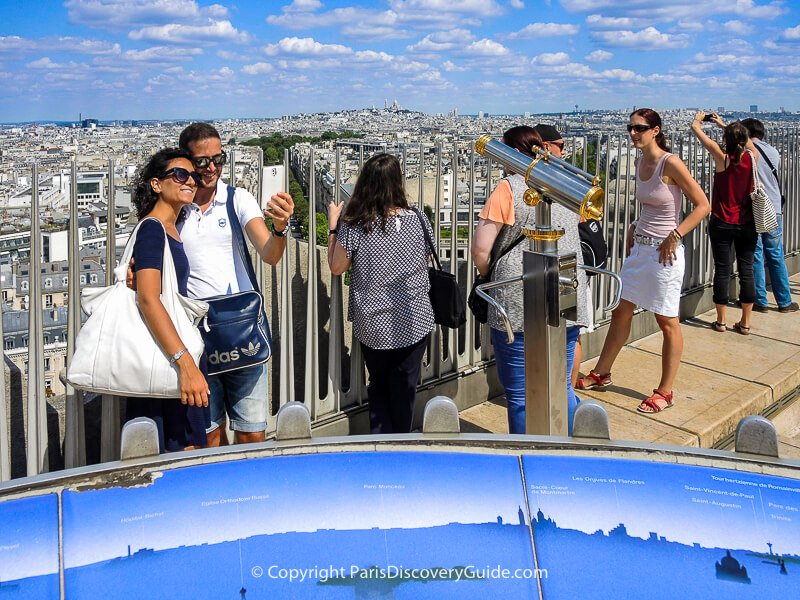
Are the views from the Arc's rooftop terrace even better than those from the Eiffel Tower?
You be the judge!
2. Check Out the Arc's Inscriptions & Decorations
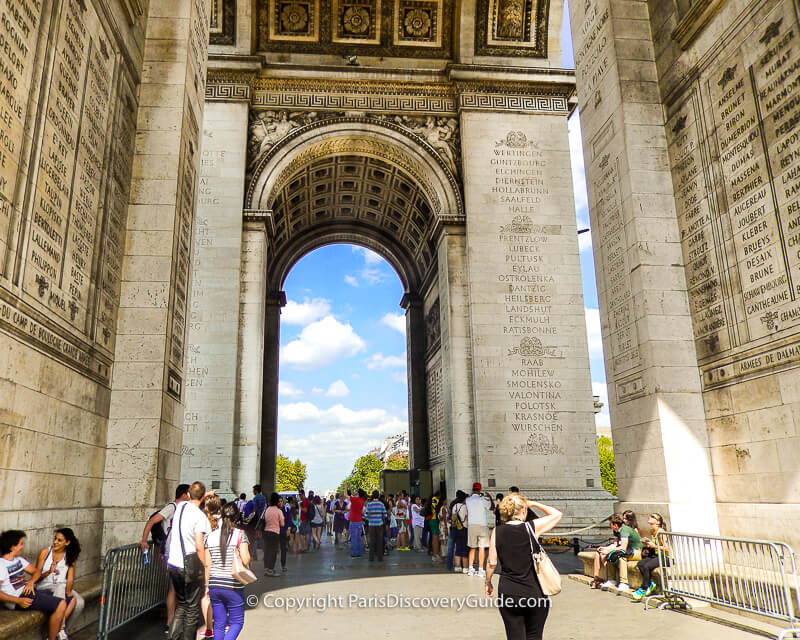
Until you see the Arc de Triomphe up close at ground level, you can't fully appreciate all of the intricate bas-relief carvings, ornamentations, and inscriptions covering most surfaces of the massive monument.
Wonder what they are and why they're there?
Look closely, and you'll see the names of 158 major battles fought between 1792 and 1815 during the French Revolutionary Wars and Napoleonic Wars where the French armies claimed victory (or tried hard or avoided total defeat, as some historians point out).
Laurel wreaths separate the battle names into small groups to make them easier to read.
The Arch also includes the names of 660 officers, mostly generals, who led the battles. Notice how some are underlined? They're the ones who died fighting.
Fun fact: Original plans called for the inclusion of 384 names of officers - but due to complaints from families, the number quickly grew to 652. And then, over the next five decades, eight more were added to reach the current total.
Another fun fact: Face the Arc with your back to Champs Elysees and take a close look at the raised-relief sculpture on the pillar to your right. It's called Le Départ des Volontaires de 1792. It's also known as La Marseillaise or La Liberté Guidant le Peuple), and was created by French artist François Rude.
Can you guess why this is the most famous sculpture on the monument?
It's because the figure personifying War who dominates the composition is a woman - not something you'll see in any of the others.
And honestly? Not something you might have expected Napoleon to support on his price Arch, much less in real life.
Want to Know More about Napoleon?
The Army Museum at Invalides (7th arrondissement) is not only one of the world's largest museums devoted to military history from the Middle Ages through the present day, including Napoleon Bonaparte's victories and accomplishments, but it also contains the military leader, war hero, and French Emperor's monumental tomb positioned under a soaring golden dome over 360 feet (110m) high.
Get a priority entrance ticket to the Army Museum, use your Paris Museum Pass for free entry, or join one of these fascinating small-group guided tours which I highly recommend if you have any interest in Napoleon because you're sure to learn things you don't already know:
3. Pay Your Respects at the Tomb of the Unknown Soldier
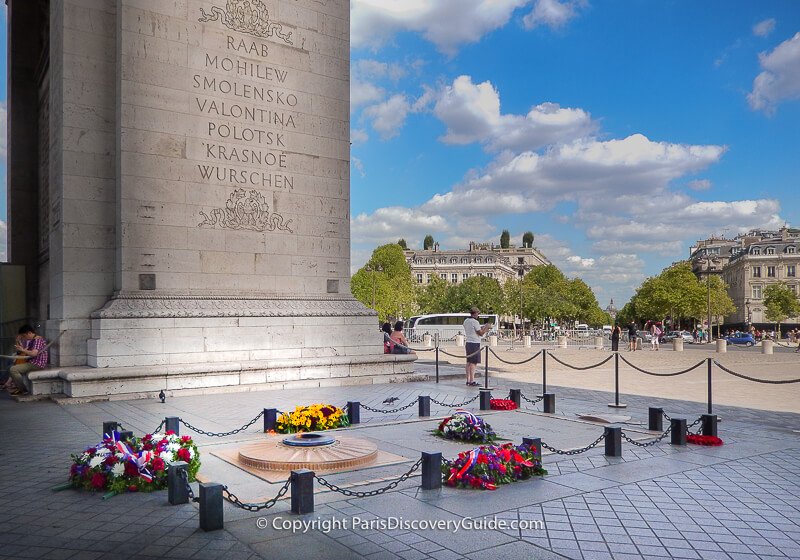
Beneath the arch is the Tomb of the Unknown Soldier - an unidentified French soldier killed during World War I whose remains were placed there in January, 1921.
At ground level, an eternal flame - "Flame of Remembrance," as it is called - honors the memory of all French soldiers killed during World War I and never identified.
The flame was first lit in 1923 and is rekindled (even though it never actually goes out) in a solemn ceremony every evening at 6:30pm led by a member of the various French Veterans associations. It has been burning for almost 100 years - even during the Nazi Occupation of Paris in World War II.
After the Liberation of Paris in August, 1944, a wreath was laid on the Tomb of the Unknown Soldier before the Victory Parade down Champs Elysées, starting a tradition still followed today before important parades down Champs Elysées.
The French President and other dignitaries visit the Arc de Triomphe to commemorate the Unknown Soldier each year on Remembrance Day (November 11), Bastille Day, and other important occasions.
Find out more about the Remembrance Day ceremonies each year on November 11
Not necessarily obvious - but important: Remember how Napoleon Bonaparte envisioned this monument as a triumphal arch for returning victorious armies to march through when returning to the city, just like the Romans? This actually happened a few times, with the last victory march through the Arc took place taking place after World War I in 1919.
Why did this tradition end?
World War I introduced unprecedented changes in what war meant: crushing tanks mowing down armies, trench warfare, poisonous gas attacks, machine gun and rudimentary bomb attacks from the sky.
France suffered horrific losses: almost 2 million French soldiers and civilians - 5% of the country's population - died in World War I. Go into any village church today, and you can see enormous bronze plaques listing, in small letters, the names of all the parish men who died fighting. In all respects the cost of the war was immeasurable.
France lost an entire generation, and public consciousness shifted from glorifying military victories to remembering what was lost.
The Tomb of the Unknown Soldier is about remembrance, and its designers positioned it to block future processions from passing through the Arc de Triomphe to celebrate victories or any other event.
Today, all parades go around the Arc in a show of respect and remembrance for those who died for their country.
4. Admire the Arc de Triomphe from a Car-Free Champs Élysées
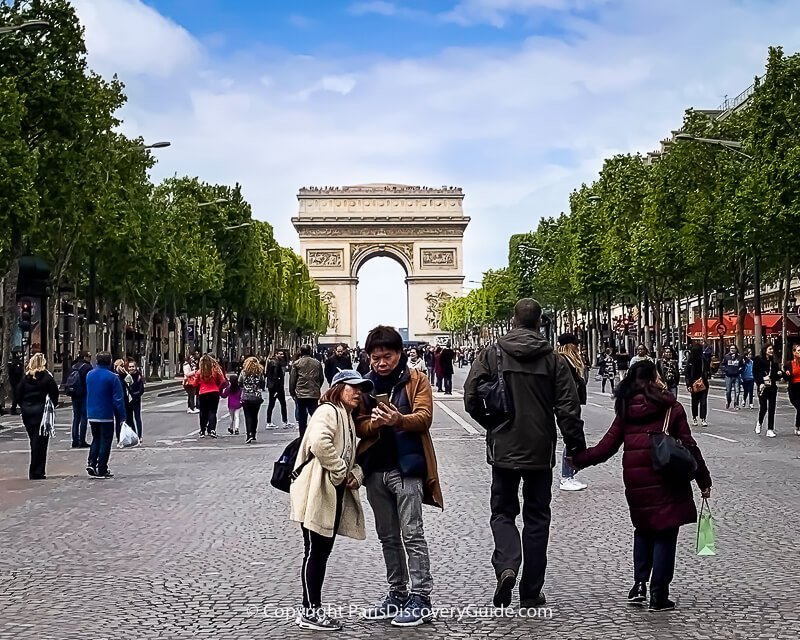
What's the best time to view the Arc de Triomphe from the sweeping expanses of Champs Élysées?
On the first Sunday of each month, when the famous avenue (normally clogged with heavy traffic) goes car-free and people reclaim the space. It's a unique experience, and not to be missed.
Here are a few more occasions when you can view the Arc from a car-free Champs Élysées:
- New Year's Eve - Parisians (and visitors) pack the avenue and toast the New Year with bottles of Champagne as a fantastic light show plays across the front of the huge monument
- Paris Marathon in April - Runners depart from the Arc de Triomphe and then cross the finish line there after their 26 mile sprint
- Bastille Day- After a solemn wreath-laying ceremony at the Tomb of the Unknown Soldier, a formal military parade marches from the Arc to the Place de la Concorde
- Tour de France - The final stage of this famous race concludes in Paris where the riders make 6-10 loops up Champs Élysées, around the Arc de Triomphe, and then back down the cobblestone avenue and around Tuileries Garden
5. View the Arc de Triomphe from the Grande Arche in La Defense
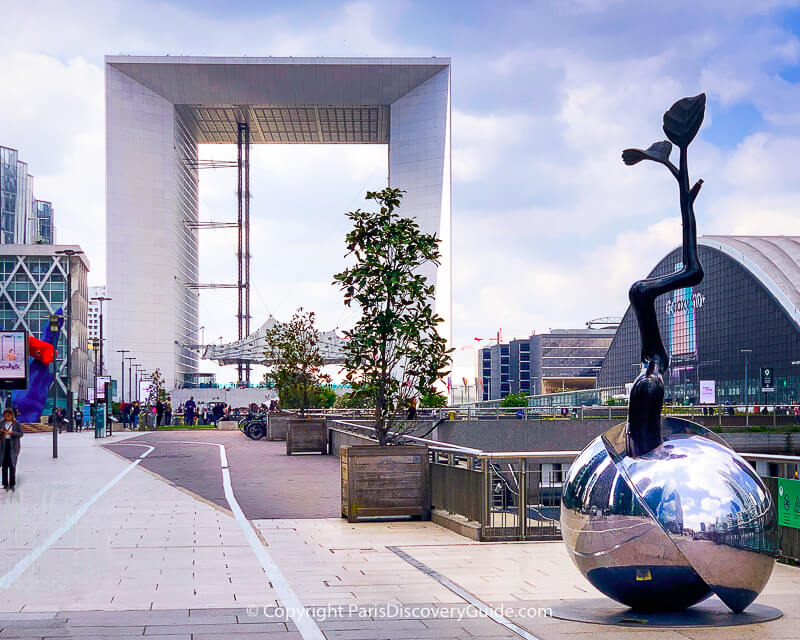
Did you know that there's an even bigger arch less than 10 minutes away (by metro) from the Arc de Triomphe?
The Grande Arche, located in Paris's futuristic La Défense business district, measures 360 feet high (110 m) from top to bottom, more than double the height of the Arc de Triomphe. To give you a sense of how big that is, imagine this: Notre Dame Cathedral and its soaring towers could easily fit inside of it.
Completed in 1989, the Grande Arche stands as a monument to humanitarian ideals rather than the military victories that Napoleon celebrated with his arch.
As a bonus, you can go up to the top of the front steps and get decent views of Paris in the distance. (Sadly, the huge rooftop terrace of the Arche has closed to the public - at least for now.)
Arc de Triomphe Hours, Location, & Map
Open: Daily - Monday through Sunday
Closed: Mornings (although sometimes until as late as 3pm) on May 8, July 14, November 11, plus all day on January 1, May 1, July 18, and December 25
Get skip-the-line Rooftop tickets
Schedule:
October 1 - March 31: 10am - 10:30pm
April 1 - September 30: 10am - 11pm
Admission: Access to the ground-level around the monument is always free of charge. A ticket or a Paris Museum Pass is required to access the rooftop terrace, except for the first Sunday of each month from November 1 through March 31; also free for anyone under 18 who visits with family, and 18-25 year olds who are EU citizens
Location: Place de Étoile / Charles de Gaulle, at the intersection of the 8th, 16th, and 17th arrondissements
Be sure you know: A pedestrian underground passage is accessible from Avenues Champs Elysees and Grand Armée; DO NOT try to cross the traffic circle at ground level
Metro: Étoile/Charles de Gaulle station
Batobus: Champs Élysees stop - Get Batobus hop on hop off river cruise tickets
Map of Arc de Triomphe Map & Location
Things to Know Before Your Visit
- Unless you visit on a car-free Sunday or other occasion when the circular roadway around the Arc is closed to traffic, NEVER try to cross the roadway by foot unless you have a death-wish. (Even if you do, don't.) ALWAYS get to the Arc via the pedestrian tunnel located where Avenue de la Grande Armée dead-ends at the traffic rotary.
- A gift shop is located on the Arc's mezzanine level.
- Accessibility: The recent addition of an elevator from the ground level to the rooftop terrace makes the Arc fully accessible for anyone with mobility issues. Everyone else: Be prepared to climb 284 steps to reach the terrace (or 244 to reach the gift shop). The underpass to reach the Arc is also fully accessible. Restrooms are now also fully accessible.
More Visitor Tips
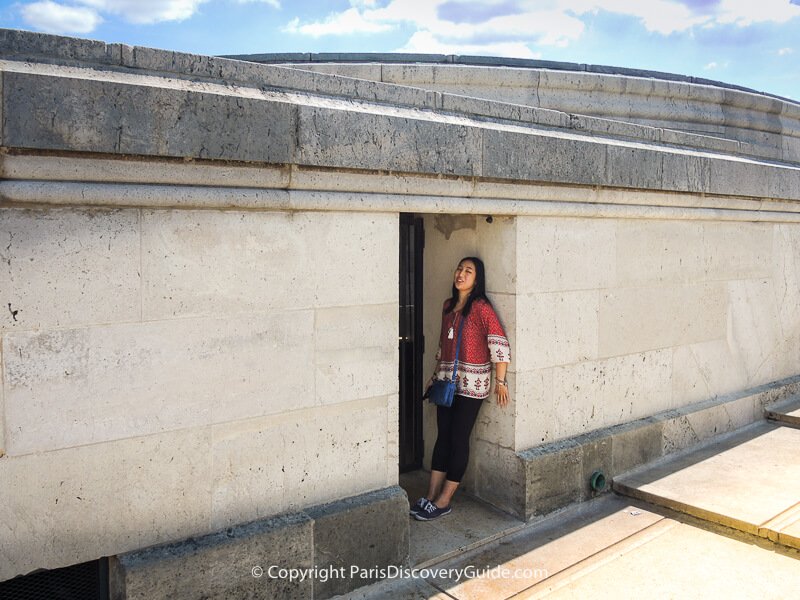
- Even on somewhat cloudy days, the sun can be intense when you're on the rooftop, and you'll notice other visitors seeking whatever shaded spots they can find. Wear sunscreen, and consider dressing in layers. On hot days, the terrace feels even hotter than on ground level. On cooler days, it can feel colder than you might expect, especially if there's any wind.
- Remember all those steps to climb up and then climb down: wear comfortable shoes!
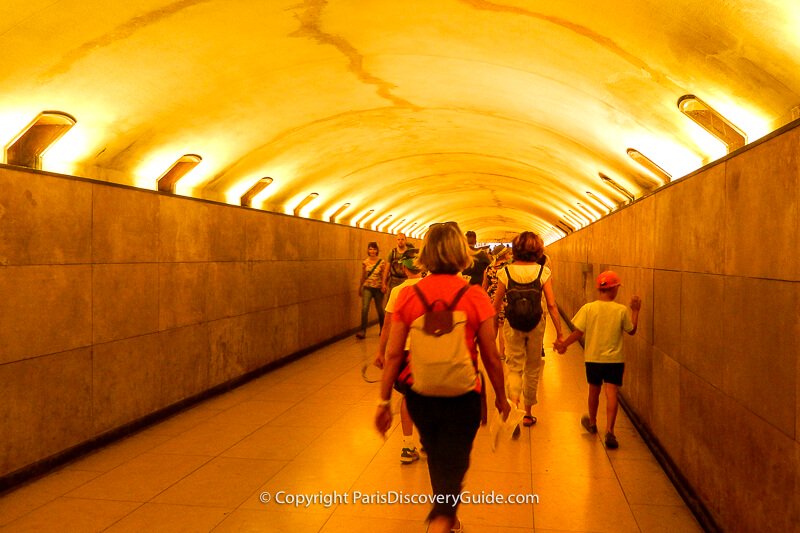
7 Interesting Facts about Arc de Triomphe
1. The full name of this famous arch is actually Arc de Triomphe de l'Étoile ("Triumphal Arch of the Star"). Why "star"? Well, if you were to look directly down at the 12 avenues and streets converging on the plaza (Place de Étoile) surrounding the Arc today, that's what it looks like - a 12-pointed star.
But when the Arc was built, only four avenues radiated out from the Arc. It must have looked like a 4-pointed star even then because the name dates back to an earlier time. Baron Haussmann added the other 8 avenues in the 1850s as part of his grand and extensive modernization of the city under Napoleon III. In case you're wondering why the plaza (and the metro station under it) is also named Charles-de-Gaulle, that's because it was renamed in the 1970s to honor the former President who had died a few years earlier. However, most people still just call it Étoile.
2. Although the Arc de Triomphe looks large when you're standing on the ground looking up - and it is, in fact, immense with a height of 164 feet (50m) and a width of 145 feet (45m), it is not the biggest triumphal arch in the world. That honor goes to the 220 foot (67m) Monumento a la Revolucíon, built in Mexico City to commemorate the Mexican Revolution against Spain.
However, the Arc de Triomphe does dwarf the Arc de Triomphe du Carrousel, a relatively petite 63 feet (19 m) high and 75 (23 m) wide located between the Louvre and Tuileries Garden.
3. Instead of seeing the Arc de Triomphe in its iconic site, you might be looking instead at a giant elephant, if French architect Charles Ripert had his way. Forty five years before the Arc was built, Ripert proposed plans for a 3-story building in the shape of an elephant with a drainage system in its trunk to be built in the exact same spot. In the words of the French government, "Non!" (Sorry, elephant lovers.)
4. In 2006, a member of a neo-nazi group tried to assassinate French President Jacques Chirac with a rifle at the Arc de Triomphe on Bastille Day, but failed. One of the 31 attempts on President Charles de Gaulle's life is also rumored to have taken place here.
5. Plans for a victory parade on the first Bastille Day (July 14, 1919) after the end of World War I called for airmen to participate on foot along with the infantry. This did not please pilots, who felt disrespected. After all, everyone called them the "heroes of the air" - for good reason.
So naturally, after meeting up for drinks at the Fouquet Brasserie on Champs Elysées, they decided to right this wrong by flying through the Arc de Triomphe during the parade. That didn't quite work out, as the pilot they chose for the stunt crashed and died during a practice flight.
But three weeks later, fellow aviator Charles Godefroy put on his officer uniform and flew a small fighter plane through the Arc while a journalist friend had the whole escapade filmed and photographed for posterity.
Although Godefroy received with only a warning from officials, his scandalized family made him promise to give up flying. As an apparently dutiful son, he devoted the rest of his life to his wine business.
And Fouquet's Brasserie continues to be a favorite spot on the avenue - stop by for a drink or meal!
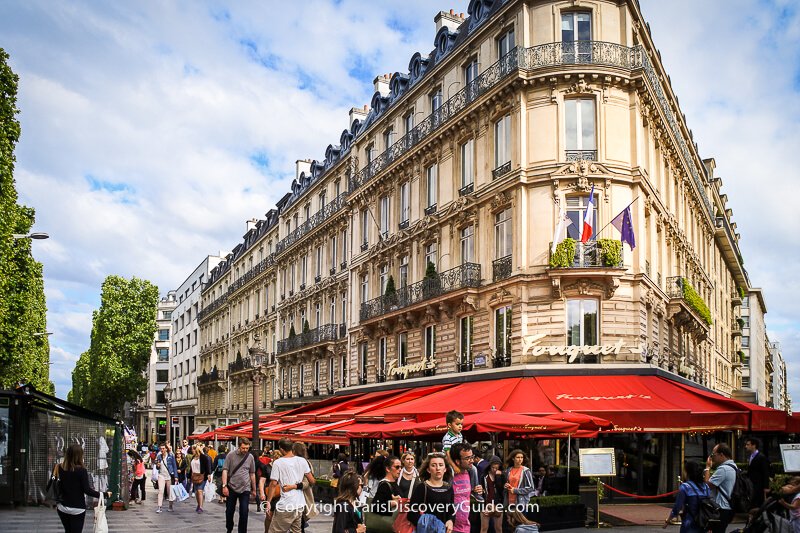
6. The Arc de Triomphe forms part of the Axe Historique (historical axis), a mostly-straight line of monuments, other buildings, and avenues forming a straight line starting at the courtyard of the Louvre at the east and including the Arc de Triomphe du Carrousel (next to Tuileries Garden), Place de la Concorde, Avenue des Champs-Elysées, the Arc de Triomphe, Avenue de la Grande Armée, and finally the Grande Arche at La Defense on the western end.
You can see each side of the Axe from the Arc's rooftop terrace, as well as from the one at the Grande Arche.
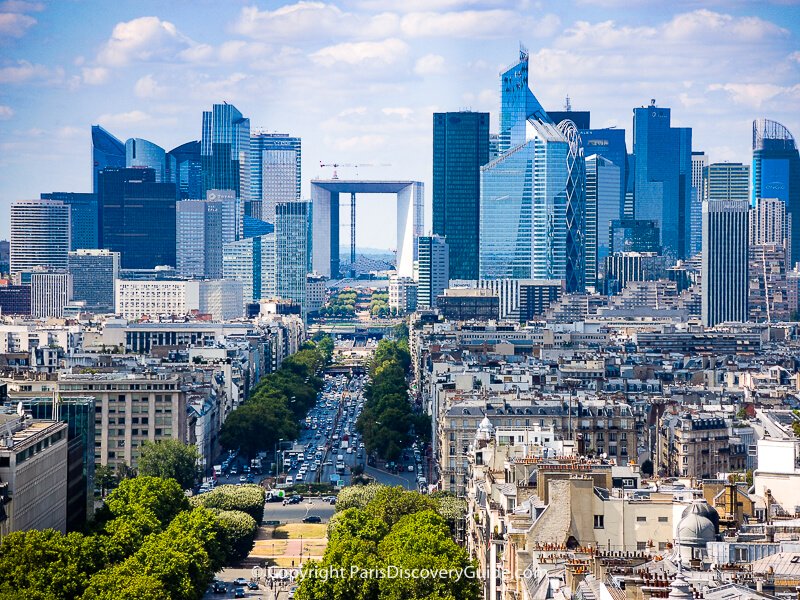
7. Construction costs for the Arc de Triomphe came to about 9.3 million francs (roughly $2 million USD) by the time of its completion in 1836 - which would equal about 28€ million euros ($34.4 million USD) today.
Book your skip-the-line Arc de Triomphe rooftop ticket
Where to Stay near Arc de Triomphe
Because of Arc de Triomphe's location on Champs-Elysées close to wonderful restaurants, fantastic shopping including all the designer showrooms in the 8th arrondissement's "Golden Triangle," the Seine River, Eiffel Tower, and numerous specialty museums in the adjacent 16th district, it's also surrounded by some of the city's best 4- and 5-star hotels, including a few in the special "Palace Hotels" category.
Here are several of the best within a few minutes' walk of the Arc:
- Hotel Barrière Le Fouquet - Legendary 5-star hotel with storied spa and pool, the members-only (which you become when you stay here) Barrière Club featuring Champagne, poker, and other games, and 101 newly redecorated guestrooms and suites, including 11 overlooking Champs-Elysées. For a splurge, book one of the very special 10,000€/plus suites overlooking the Arc de Triomphe - and enjoy a meal at Fouquet Brasserie where aviator Charles Godefroy and other pilots hatched their plans to fly through the Arc on Bastille Day 1919.
Book now - Le Plaza Athénée- Superb 5-star hotel in the coveted "Palace" category filled with crystal chandeliers, antiques, orchids, and other fresh flowers. Some of the 208 guest rooms and suites offer Eiffel Tower views. A lushly romantic garden framed in ivy makes the perfect spot for afternoon tea. A favorite of fashion designers who love the onsite spa and hamman featuring Christian Dior products. Superb service. Book Now
- Hotel Vernet Champs Elysees - Charming 5-star boutique hotel with 50 guest rooms and suites featuring lovely Carrera marble bathrooms, lovely decor, and a dining room with a stunning vintage glass ceiling in a Haussmannian building
Book now - La Clef Champs Elysees Paris - Wonderful 5-star hotel in a Haussmannian-style building with 70 luxurious rooms and apartments including fully-equipped kitchens, a fitness center, hidden garden, and excellent service.
Book now
Here are more options:
Map Showing More Paris Hotels
Use this Paris hotel map to find more hotels near the Arc de Triomphe:
Where to Eat near Arc de Triomphe
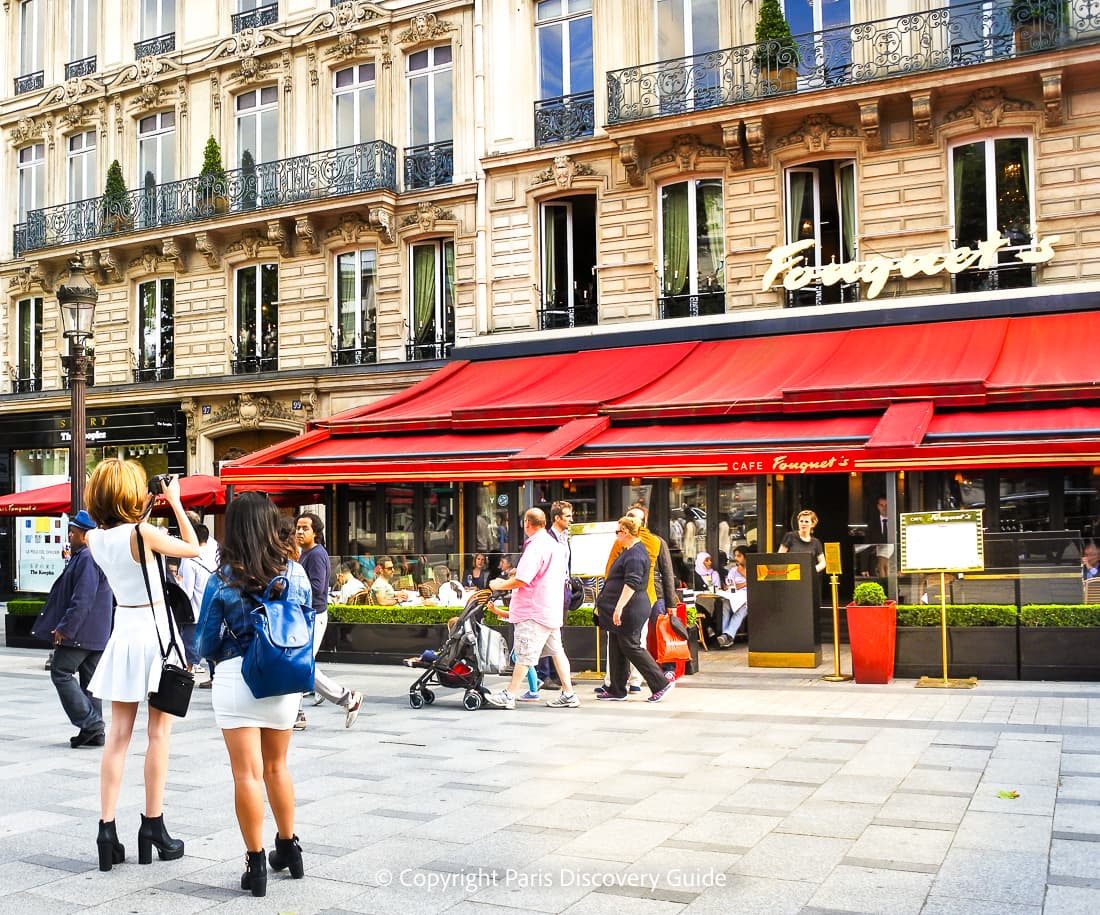
Fouquet's Brasserie (99 Champs Elysees), of course! Raise a glass of champagne (or other beverage of your choice) to the memories of the brave World War I pilots, or enjoy a wonderful meal at this upscale brasserie.
But anywhere else on or near the Avenue is also good - although if you're visiting Paris, maybe avoid international chains with a presence in your own country, and also avoid any place that looks like an obvious tourist trap, because it probably is.
Be aware that prices may seem a bit on the high side because of the location.
Here are a few specific suggestions:
- L'Atelier Etoile de Joël Robuchon - Located at the top of the famous Publicis Drugstore (133 Champs-Elysees), this is a "splurge" occasion Michelin-starred restaurant, although relatively affordable prix-fixe menus starting at around 49€ (plus wine) are offered at lunch
- Le Drugstore - Also located within the Publicis Drugstore (133 Champs-Elysees), but a more affordable option and one of my personal favorites ever since my very first trip to Paris when I was on a student budget (prices and quality have risen quite a bit since that time). The menu offers contemporary bistro fare and varies by season
- Vesuvio-George V (25 Rue Quentin-Bauchart (about 100 feet from Champs-Elysees) - For when you're in Paris and crave Italian. Paris has its share of rather mediocre Italian food (especially in touristy areas), but Italian favorites are quite good here, and even offers a kids menu
- Paul Boulangerie (84 Champs Elysees) - Croissants and other pastries, sandwiches, pasta dishes, pizzas, and other light fare make Paul a deservedly popular spot with affordable prices. Take out or eat in - although the outdoor seating is especially pleasant here
- Ladurée (75 Champs Elysees) and Pierre Hèrme (133 Champs Elysees) - Indulge yourself with macaroons and other special bonbons offered by these top names. Ladurée also offers light meals in their tea room / restaurant
- Le Relais de l'Entrecote (15 Rue Marbeuf) - about a 4-minute walk from the avenue, but worth it!) - The menu offers just one main dish - steak-frites - which comes with a walnut-topped salad and bread, but you get to choose your wine and dessert. You'll usually have to stand in line for awhile to get in - but it's worth the wait!
- Starbucks (inside Les Arcades des Champs Elysees) - If you're from the U.S. and desperate for American-style coffee and lattes, this is where to find it!
More to See & Do near Arc de Triomphe
More Articles about Top Paris Attractions
- Find out about other top Paris attractions
- How to choose the best way to tour the (huge) Louvre Museum
- Find out about the superb stained glass and classical concerts at Saint Chapelle
- Paris Museum Pass - How much money and time can you save with it?
- Why you should visit the Conciergerie
- Easy day trips from Paris to Versailles, Giverny, Mont Saint Michel, D-Day Normandy Beaches, Disneyland, London, Bruges, & more


